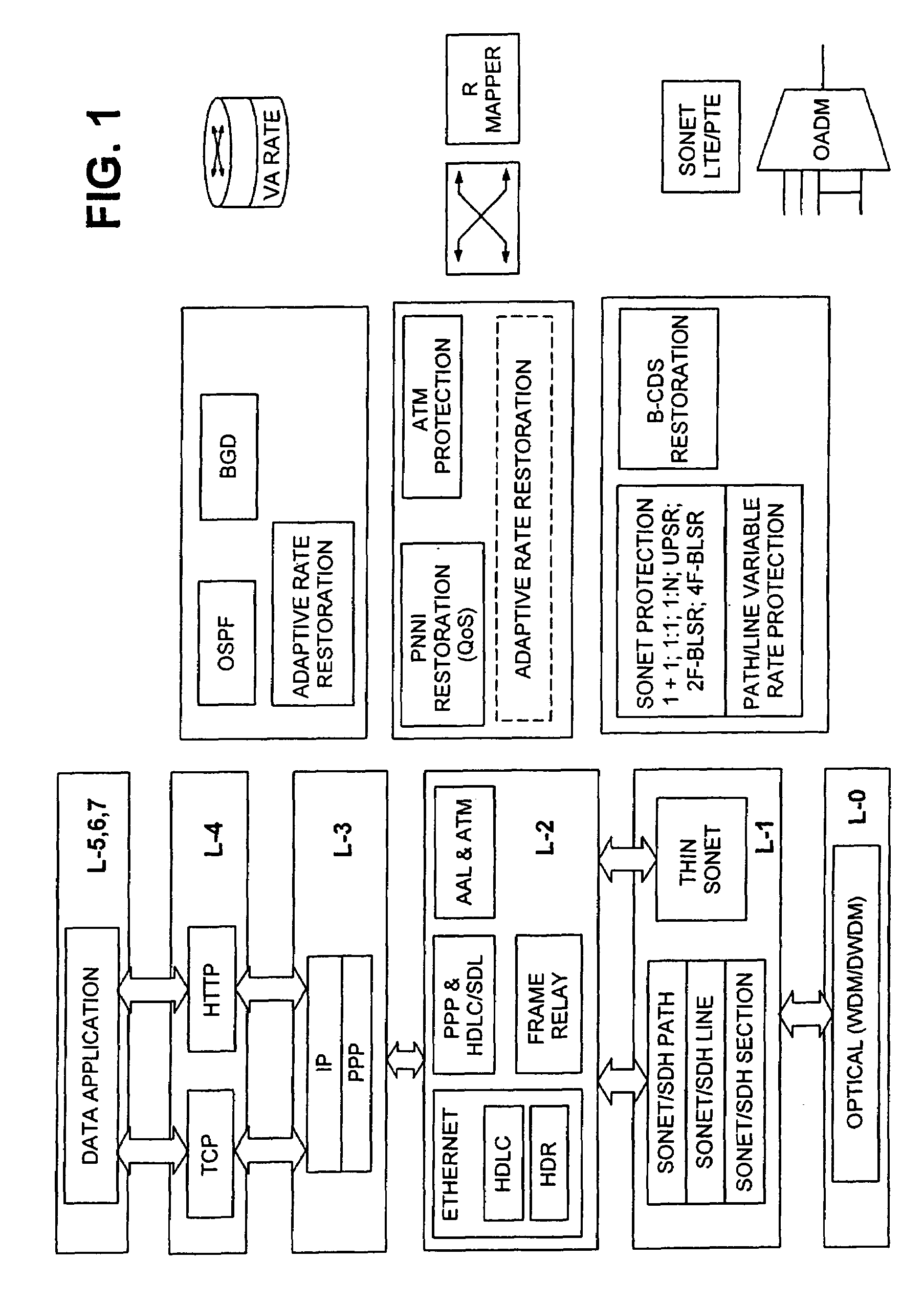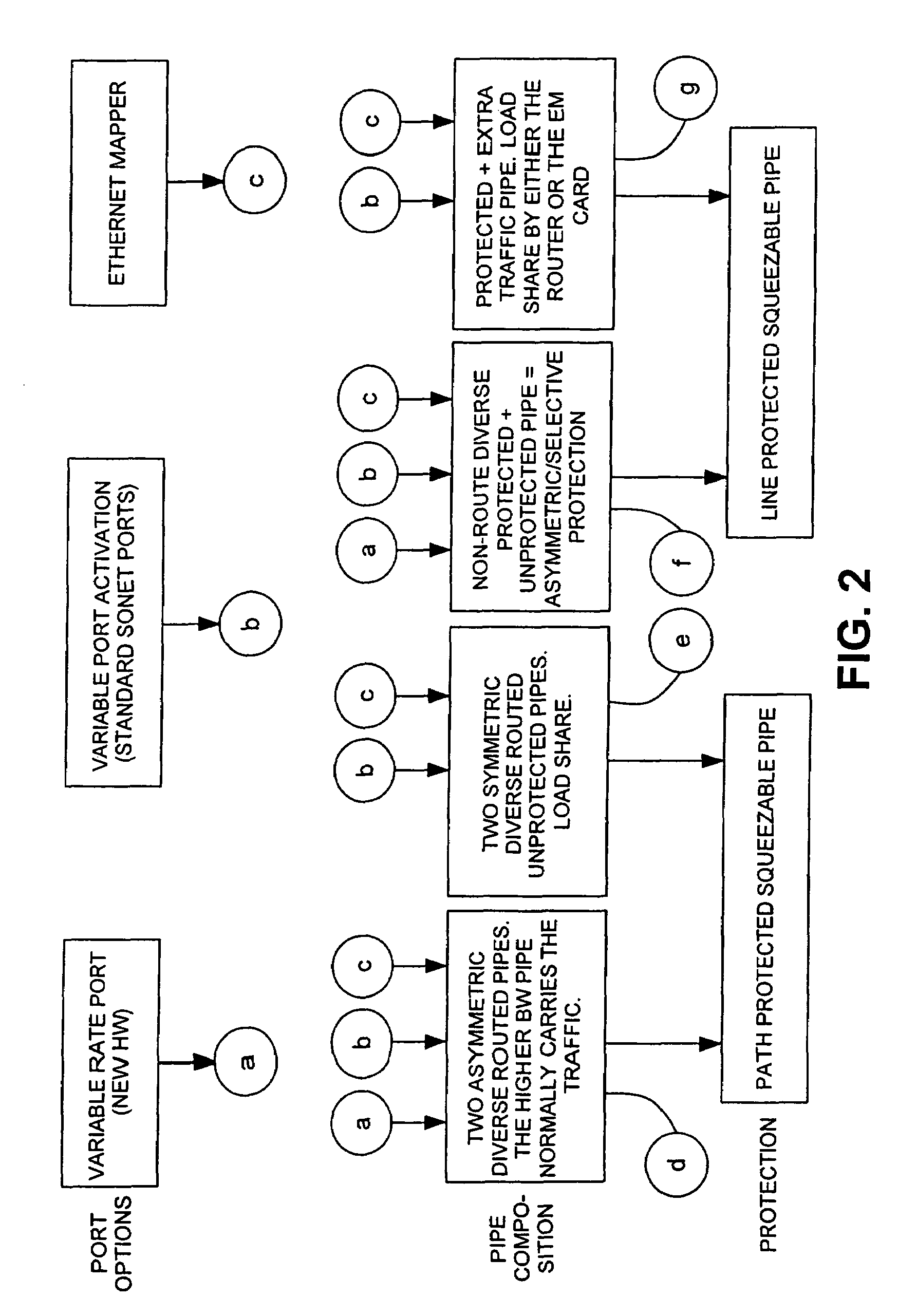Adaptive rate traffic recovery mechanism for communication networks
a technology of communication network and traffic recovery mechanism, applied in the field of communication network, can solve the problems of reducing the service life of the transmission network,
- Summary
- Abstract
- Description
- Claims
- Application Information
AI Technical Summary
Benefits of technology
Problems solved by technology
Method used
Image
Examples
Embodiment Construction
[0051]The adaptive rate recovery mechanism according to the invention uses a variable BW data pipe between two data terminals. Variable or adaptive rate implies allocating less bandwidth for the traffic during a protection switch than for the traffic during the normal operation.
[0052]The term ‘pipe’ is used herein to define a logical connection between two data terminals. Squeezeable pipes are a new class of data transport service designed to work in conjunction with L-1 protection switching mechanisms. The squeezeable pipes could be implemented at the path or line level, based on the existing SONET path or line switched protection protocols. The L-3 device will not detect that any connection has been broken but may receive pause frames informing it to reduce its transmission rate. In L-2 and L-3, the data network is provided with a number of protocols that allow restoration in the event of a failure in the network, as discussed above. Rate adaptation according to the invention can ...
PUM
 Login to View More
Login to View More Abstract
Description
Claims
Application Information
 Login to View More
Login to View More - R&D
- Intellectual Property
- Life Sciences
- Materials
- Tech Scout
- Unparalleled Data Quality
- Higher Quality Content
- 60% Fewer Hallucinations
Browse by: Latest US Patents, China's latest patents, Technical Efficacy Thesaurus, Application Domain, Technology Topic, Popular Technical Reports.
© 2025 PatSnap. All rights reserved.Legal|Privacy policy|Modern Slavery Act Transparency Statement|Sitemap|About US| Contact US: help@patsnap.com



